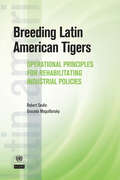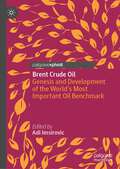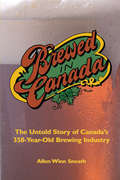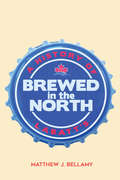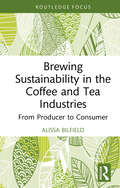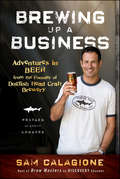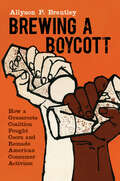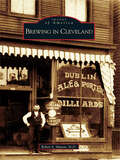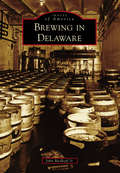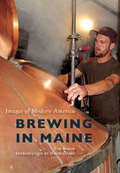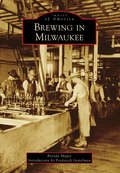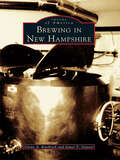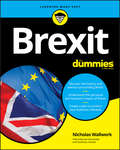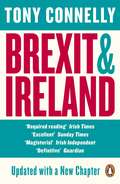- Table View
- List View
Breeding Latin American Tigers: Operational Principles for Rehabilitating Industrial Policies in the Region
by Robert Devlin Graciela MoguillanskyThis book is motivated by the emerging rehabilitation of industrial policies as a tool for supporting economic transformation and high rates of growth in developing countries. It argues that underperforming disciples of the Washington Consensus' 'market fundamentalism' should learn and practice the art of systemic industrial policies, which requires a medium-long term strategic perspective and intelligent proactive state interventions in markets. However, it also stresses that rehabilitation requires that industrial policies be developed and implemented in a context of home- grown public-private alliances that avoid state 'capture' by special interests. It first examines the 'how' of industrial policy in the public sectors of ten non-Latin American countries in Asia, Europe, and Oceania that have been successful in promoting economic catch-up with rich countries, or have performed better than Latin American countries with similar resource endowments. The book defines '10+1' generic First Principles for the use, design, and execution of modern industrial policies, and then examines the experiences of nine Latin American and Caribbean governments against these First Principles. The authors identify large gaps in the organizational and operational effectiveness of their public sectors, and suggest ways to close these gaps.
BreezoMeter: Making Air Pollution Data Actionable
by Frank V. Cespedes Allison M. Ciechanover Margot EiranThe case focuses on an Israeli startup that provides actionable air pollution data and forecasts. The company has over 50 enterprise customers and its tool reached a million people daily in 67 countries. The co-founders wrestle with which markets and customers to focus on given resource constraints. Should they focus on the current top segments and cease marketing and customization efforts for other verticals, or market the venture's product broadly? How should it price its product for different uses in different markets?
Brent Crude Oil: Genesis and Development of the World's Most Important Oil Benchmark
by Adi ImsirovicIn 2023, the Brent oil benchmark, a key international oil price marker for global crude oil underwent a substantial change. It incorporated another key benchmark, West Texas Intermediate oil from Midland, produced in the US and sold into European and Asian markets. Brent is used to set prices for over 70 per cent of global crude oil, so this fundamental change in the composition of the benchmarks is making some observers question its future development and even its survival. Lessons from the past are very important for the future, particularly in this case. This book revisits the history and genesis of the Brent oil benchmark and how it came to dominate the global oil market for oil. With chapters written by the individuals involved in trading and shaping the market, it brings the richness and texture to the usual historical narrative by recalling the events, companies and people who shaped its history. It introduces the historical background to the international oil markets and the reasons for a move from OPEC-set prices to oil benchmarks. It discusses the role of the North Sea in the international oil markets, as well as the role of the British government in the British national oil and gas monopoly (British National Oil Corporation or BNOC). The development of the North Sea oil, which coincided with the liberalisation policies in the UK and US, is also discussed, alongside the challenges of the oil exchange (International Petroleum Exchange) in London, the home of Brent and looks at the failures, attempted takeovers, and its eventual sale to the Intercontinental Exchange (ICE). It finally discusses the growing market ecosystem of the price reporting agencies (PRAs), which play a key role in establishing the value of the Brent benchmark.
Brent Spar Incident: "A Shell of a Mess"
by Stephen A. Greyser Norman KleinSeeking to dispose of an outmoded oil drilling platform in the North Sea, Shell finds itself confronted by Greenpeace and other environmentalists. The protesters land 12 people onto the rig and initiate media coverage of their "occupation." The case follows the events during the spring and summer of 1995, focusing on the United Kingdom and Continent countries. Students are confronted with the need to recommend communication approaches and actions at various stages of the developments.
Brent Walker Group PLC
by Andrew S. Park Steven R. FensterThe Brent Walker Group completed the largest out-of-court restructuring in the United Kingdom. After overexpansion in the 1980s, the company pursued a large acquisition financed with debt and then encountered falling asset prices. With the assistance of the Bank of England, the company reached an accommodation with its lenders involving deferral of interest and conversion of debt to equity. The case presents the negotiating challenges faced by the company's creditor classes and portrays the distinct roles of management, shareholders, and directors in U.K. restructuring. When studied in comparison with U.S. restructuring practices, the situation provides an interesting example of an international reorganization.
Brentwood Associates: Exiting Zo s Kitchen
by Joan Farre-Mensa Stephanie SiuThe case discusses the trade-offs associated with the different exit options that private equity firm Brentwood Associates contemplated for its investment in Zo s Kitchen during the summer of 2013: an IPO, a sale to a strategic or financial acquirer, or waiting a few more years before exiting the investment.
Bretton Woods System of Exchange Rates
by Louis T. Wells Jr.Describes the exchange rate system adopted at Bretton Woods in 1994.
Bretton Woods and the Liberal World Order
by Jonathan Schlefer Sophus A. ReinertCase - Business & Government Relations
Brewed in Canada: The Untold Story of Canada's 350-Year-Old Brewing Industry
by Allen Winn SneathWinner of the 2002 North American Guild of Beer Writers’ Quill & Tankard Annual Writing Award The Canadian brewing industry predates Confederation by two hundred years; Canada boasts the oldest, continuously operating brewery in North America. Canadian brewers have survived the persecution of the Temperance Movement and Prohibition, the Great Depression, two World Wars and the challenge of Free Trade. Today, brewing in Canada is a 10 billion dollar business whose one constant is change. From its colonial past to the microbrewery renaissance, Brewed in Canada is a passionate narrative of individual power, colourful characters, family rivalries and foreign ownership. Individual stories tell of personal success and failure, bankruptcies, takeovers, consolidation and rationalization. As men of influence, these brewers made significant contributions to their local communities and the country. Beyond the day-to-day operation of their brewing business, some would make their mark in politics, while others built churches, hospitals and helped establish universities. A commitment to community service - and to brewing excellence - continues today.
Brewed in Michigan: The New Golden Age of Brewing in the Great Beer State
by William RapaiBrewed in Michigan: The New Golden Age of Brewing in the Great Beer State is William Rapai’s “Ode on a Grecian Urn”—a discussion of art and art’s audience. The art in this case is beer. Craft beer. Michigan craft beer, to be exact. Like the Great Lakes and the automobile, beer has become a part of Michigan’s identity. In 2016, Michigan ranked fifth in the number of craft breweries in the nation and tenth in the nation in craft beer production. Craft brewing now contributes more than $1.8 billion annually to the state’s economy and is proving to be an economic catalyst, helping to revive declining cities and invigorate neighborhoods. This book is not a beer-tasting guide. Instead, Rapai aims to highlight the unique forces behind and exceptional attributes of the leading craft breweries in Michigan. Through a series of interviews with brewmasters over an eighteenth-month sojourn to microbreweries around the state, the author argues that Michigan craft beer is brewed by individuals with a passion for excellence who refuse to be process drones. It is brewed by people who have created a culture that values quality over quantity and measures tradition and innovation in equal parts. Similarly, the taprooms associated with these craft breweries have become a conduit for conversation—places for people to gather and discuss current events, raise money for charities, and search for ways to improve their communities. They’re places where strangers become friends, friends fall in love, and lovers get married. These brewpubs and taprooms are an example in resourcefulness—renovating old churches and abandoned auto dealerships in Michigan’s biggest cities, tiny suburbs, working-class neighborhoods, and farm towns. Beer, as it turns out, can be the lifeblood of a community. Brewed in Michigan is a book for beer enthusiasts and for people who want a better understanding of what makes Michigan beer special. Cheers!
Brewed in the North: A History of Labatt's
by Matthew J. BellamyFor decades, the name Labatt was synonymous with beer in Canada, but no longer. Brewed in the North traces the birth, growth, and demise of one of the nation's oldest and most successful breweries. Opening a window into Canada's complicated relationship with beer, Matthew Bellamy examines the strategic decisions taken by a long line of Labatt family members and professional managers from the 1840s, when John Kinder Labatt entered the business of brewing in the Upper Canadian town of London, to the globalization of the industry in the 1990s. Spotlighting the challenges involved as Labatt executives adjusted to external shocks - the advent of the railway, Prohibition, war, the Great Depression, new forms of competition, and free trade - Bellamy offers a case study of success and failure in business. Through Labatt's lively history from 1847 to 1995, this book explores the wider spirit of Canadian capitalism, the interplay between the state's moral economy and enterprise, and the difficulties of creating popular beer brands in a country that is regionally, linguistically, and culturally diverse. A comprehensive look at one of the industry's most iconic firms, Brewed in the North sheds light on what it takes to succeed in the business of Canadian brewing.
Brewery Safety: Principles, Processes, and People
by Matt StinchfieldBrewers of all sizes should uphold the value of safety alongside their edgy brands and creative and carefully crafted beers and other beverages. It's the responsibility of all brewery employees to assess hazards, learn how to control or eliminate them, and to document and train each other on the safest ways to perform tasks. It's not just about government regulation, but it is also about making your brewery the best brewery possible—for your beer, your staff, and your visitors. Breweries face hazards that can be divided into physical, chemical, biological, ergonomic, and psychosocial hazards. Learning to address these aspects of safety to ensure a safe product and working environment is paramount. From physical trauma to chemical irritations, biological hazards to psychosocial hazards, Brewery Safety explores in-depth how to think about and avoid these hazards. Brewers will learn to evaluate, educate, and execute safety conscious measures to ensure that the working environment, welfare of staff, and the quality of the product are first and foremost.
Brewing Sustainability in the Coffee and Tea Industries: From Producer to Consumer (Earthscan Food and Agriculture)
by Alissa BilfieldThis book focuses on the often intertwined industries of coffee and tea, using accounts of single producer communities to highlight the transformation from plantation-style colonial agriculture towards systems that now claim to produce social and environmental benefits from the farm to the cup. Focusing on the dynamics of farmers' experiences producing coffee and tea ethically and sustainably at origin, the book shows how these values are transmitted and reinforced throughout the value chain. Exploring tandem case studies of fair trade cooperatives in Guatemala and Sri Lanka, it provides an insight into the creation of more sustainable value chains from producer to consumer in the global marketplace, incorporating the perspectives of coffee exporters, importers, roasters, and café owners. This book is focused on the prospects of the specialty movement in food as a catalyst for forging more authentic, just, and sustainable supply chains that consider both people and the environment. This book will be of great interest to students and scholars of food and agriculture, sustainable food systems and supply chains, the fair trade movement, sustainable development, and social entrepreneurship and social innovation.
Brewing Up a Business: Adventures in Beer from the Founder of Dogfish Head Craft Brewery
by Sam CalagioneUpdated business wisdom from the founder of Dogfish Head, the nation's fastest growing independent craft brewery Starting with nothing more than a home brewing kit, Sam Calagione turned his entrepreneurial dream into a foamy reality in the form of Dogfish Head Craft Brewery, one of America's best and fastest growing craft breweries. In this newly updated Second Edition, Calagione offers a deeper real-world look at entrepreneurship and what it takes to operate and grow a successful business. In several new chapters, he discusses Dogfish's most innovative marketing ideas, including how social media has become an integral part of the business model and how other small businesses can use it to catch up with bigger competitors. Calagione also presents a compelling argument for choosing to keep his business small and artisanal, despite growing demand for his products. Updated to offer a more complete look at what it takes to keep a small business booming An inspiring story of renegade entrepreneurialism and the rewards of dreaming big, working hard, and thinking unconventionally Shows how to use social media to reach new customers and grow a business For any entrepreneur with a dream, Brewing Up a Business, Second Edition presents an enlightening, in-depth look at what it takes to succeed on their own terms.
Brewing a Boycott: How a Grassroots Coalition Fought Coors and Remade American Consumer Activism (Justice, Power, and Politics)
by Allyson P. BrantleyIn the late twentieth century, nothing united union members, progressive students, Black and Chicano activists, Native Americans, feminists, and members of the LGBTQ+ community quite as well as Coors beer. They came together not in praise of the ice cold beverage but rather to fight a common enemy: the Colorado-based Coors Brewing Company. Wielding the consumer boycott as their weapon of choice, activists targeted Coors for allegations of antiunionism, discrimination, and conservative political ties. Over decades of organizing and coalition-building from the 1950s to the 1990s, anti-Coors activists molded the boycott into a powerful means of political protest.In this first narrative history of one of the longest boycott campaigns in U.S. history, Allyson P. Brantley draws from a broad archive as well as oral history interviews with long-time boycotters to offer a compelling, grassroots view of anti-corporate organizing and the unlikely coalitions that formed in opposition to the iconic Rocky Mountain brew. The story highlights the vibrancy of activism in the final decades of the twentieth century and the enduring legacy of that organizing for communities, consumer activists, and corporations today.
Brewing in Cleveland (Images of America)
by Robert A. MussonBeginning in the mid-1800s, the beer-brewing industry in Cleveland experienced its most extensive growth due to the rapidly increasing immigrant population of mostly Germans,Czechs, and Irish. The breweries enjoyed great success until the Prohibition era closed all brewing operations down for 14 dry years. In 1933, the industry started anew, andClevelanders were able to enjoy locally made beer for 50 more years before business conditions led to the industry's second demise. Today the industry has once again experienced a rebirth, this time on a smaller scale with theemergence of a number of popular brewpubs and microbreweries.
Brewing in Delaware (Images of America)
by John Medkeff Jr.While Delaware maintains one of the oldest beer-brewing traditions in the United States, its history has largely been lost or forgotten over the course of nearly four centuries. Beer was a main source of sustenance to Delaware's early European settlers, and its production eventually became one of the young colony's first industries. From its humble colonial beginnings, beer production grew to become one of the state's largest and most profitable industries. National Prohibition put a temporary end to the golden age of brewing in Delaware; however, the industry made a modest recovery after repeal. The state's two remaining breweries ultimately fell victim to larger, better funded regional and national concerns. There would be no brewing in Delaware for the next four decades. The remarkable popularity of craft beer in the 1990s fueled a brewing revival in the state, punctuated by Delaware's nationally recognized, award-winning breweries.
Brewing in Maine (Images of Modern America)
by David Geary Tom MajorMaine was once a national leader in the temperance movement to outlaw alcohol. In the last 30 years, however, the Pine Tree State has been equally influential in the craft beer movement. Since 1986, when David and Karen Geary opened New England's first microbrewery, more than 50 breweries have opened in Maine. The state not only ranks among the top 10 for breweries per capita, it also boasts two of the 50 largest craft breweries in the country. The personalities and visions of the brewers are as diverse as the beers they create. Some have opened their breweries in the hulking mill complexes of Lewiston and Biddeford or the former factories of Portland. Others have brewed at the scenic mountain resorts of Sugarloaf and Sunday River or on the quaint, historic wharves of Belfast and Kennebunk, and even on distant Monhegan Island. Farmstead breweries have sprung up from Skowhegan to Lyman, while the state's industrial parks are no less fertile.
Brewing in Milwaukee (Images of America)
by Frederick Gettelman Brenda MageeMilwaukee is most famous for its booming brewing industry, which is directly tied to a surge in German immigration in the 1840s. These new citizens brought along their work ethic, culture, and a love for their native beverage. Not all immigrants arrived from Europe; many, like Richard Owens, came from Britain. Owens has been credited with establishing the first commercial brewery in the area in 1840. Other men followed, many of whom were already experienced in brewing, and seized the opportunity to start new businesses. Brand names were carved on the front of brewery buildings, deals were made with a handshake, partnerships were cultivated, and factory cities were raised. By 1860, nearly 200 breweries were in operation in Wisconsin, with more than 40 in Milwaukee alone. Of the original 40, four have stood the test of time: Blatz, Pabst, Schlitz, and Miller are still brewed in Milwaukee, right where they were born.
Brewing in New Hampshire (Images of America)
by Glenn A. Knoblock James T. GunterBrewing in New Hampshire explores the fascinating history of the state's beer and ale brewing industry from Colonial days, when it was home and tavern based, to today's modern breweries. The book's many unusual and rare illustrations document the state's earliest brewers, including its most famous brewer, Frank Jones. Many lesser-known breweries that operated here are also covered, including the state's only brewery to be owned and operated by a woman before the modern era. The book concludes with a look at the craft-brewing business in New Hampshire and is a must for anyone interested in local history or for those who simply enjoy a good New Hampshire beer and wonder how it all began.
Brewing, Beer and Pubs: A Global Perspective
by David Higgins Ignazio Cabras David PreeceThe production of beer today occurs within a bifurcated industrial structure. There exists a small number of large, global conglomerates supplying huge volumes of a limited range of beers, and a plethora of small and medium breweries producing a diverse range of beers sold under unique brands. Brewing, Beer and Pubs addresses a range of contemporary issues and challenges in this key sector of the global economy, and includes contributions by research specialists from a variety of countries and disciplines. This book includes the marketing and globalization of the brewing industry, beer excise duties and market concentration, and reflections upon developments in brewing and beer consumption across the world in order to explore the wide-reaching influence of this industry. Alongside these global topics more localised themes are presented such as market integration in the Chinese beer and wine markets, beer and brewing in Africa and South America, and turbulence and change in the UK public house industry, which demonstrate how the consumption of beer in pubs and other social environments make the beer industry integral to local communities and regions worldwide.
Brexit For Dummies
by Nicholas WallworkYour practical and fearless guide to surviving the world’s biggest break-up Whether you’re a staunch Remainer, a buccaneering Brexiteer, or are wavering between the two camps, you’ll want to be fully au fait with all the issues surrounding Britain’s exit from the EU—wherever in the world you and your business are based. This book, by leading businessman and entrepreneur Nicholas Wallwork, will arm you with everything you need to negotiate the post-Brexit landscape and end up just where you need to be. Kicking off with the history behind the tightly fought June 23 referendum, Brexit for Dummies covers the origins of British Euroscepticism right up to the most recent legal and policy changes in place following the vote. As well as looking at the influence Brexit has already had—both domestically and internationally—the book takes a glimpse at what lies ahead, giving you vital insights into how to protect your business right now and to capitalize on new opportunities in the future. Changing customs: how to negotiate the new import-export rules Think global: how is Brexit influencing the international economy? Get moving: what do immigration policy changes mean for my business? Buy or sell?: make the smartest foreign investment decisions both inside and outside Britain Love it or loathe it, Brexit has profound implications for your business, and this guide will help you stop worrying and prove that au revoir doesn’t mean goodbye for good.
Brexit and After: Perspectives on European Crises and Reconstruction from Asia and Europe
by Martin Holland Kumiko HabaThis book makes a new departure from others on the subject. Not only does it analyze Brexit from the domestic point of view in the UK—democracy, social analysis, and construction of new institutionalization with the EU – it extends the analysis externally and reconsiders the EU and UK relationship with Asia and the implications for international relations and a new world order. From this foundation, this book presents a broad and diverse spectrum of views concerning Brexit and the EU. For these reasons, it serves as an original and excellent textbook for undergraduate and graduate students as well as for researchers of the EU and international relations. Contributions to this volume are from the European Union Studies Association (EUSA) Asia Pacific Tokyo Conference and affiliated conferences at the following universities between 2017-19: Aoyama Gakuin University (Tokyo), Taiwan National University (Taipei), and Fudan University (Shanghai). Almost all of the authors have engaged in interdisciplinary research on the EU, are members of the EUSA Asia Pacific, and have made public presentations on Brexit and how it relates to the EU, Asia, international relations, economics, and institutions. Therefore, this book presents various aspects of Brexit and its aftermath from the perspectives of the disciplines of political science, economics, and international relations in its analysis of the UK, the EU, Asia, and the future world order. The EUSA Presidents and executive committee members participated in the Asia Pacific Conference; postgraduate student workshops were organized and their presentations moderated, thereby guaranteeing both the quality of the contributions to this book as well as encouraging young talented scholars to write about Brexit and the EU. While many books on Brexit have been published, this book offers many new and perspectives that provide suggestions for possible solutions to the problems facing the UK and the EU after Brexit.
Brexit and Ireland: The Dangers, the Opportunities, and the Inside Story of the Irish Response
by Tony Connelly'Excellent' Sunday TimesBrexit represents potentially the single greatest economic and foreign-policy challenge to the Irish state since the Second World War. There is hardly any area of Irish life that hasn't be affected.More than any other journalist, RTE's long-time Brussels correspondent Tony Connelly has been helping the public make sense of the implications of Brexit for Ireland. Now, he tells the dramatic inside story of the Irish response to this political and economic earthquake and lays out the agenda for the uncertain years ahead.Based on extensive interviews with insiders in Dublin, London, Belfast and Brussels, Brexit and Ireland is full of insights about how the EU actually works, and of colourful and revealing stories from the corridors of power. It is a must-read for anyone who cares about Ireland's future.'A superb work of reporting, and a much needed one' Andrew Sparrow, Guardian'I was completely absorbed . . . Connelly shows that the implications for the Irish Republic extend to the entire economy and its relationship with the EU' New Statesman
